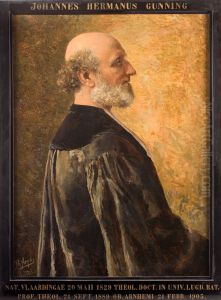Bernardus Arps Paintings
Bernardus Arps, commonly known as Bernard Arps, was a Dutch sculptor known for his figurative work, which often reflected themes of labour and the human condition. Born on February 4, 1887, in The Hague, Netherlands, Arps was part of a generation of artists who were active in the early to mid-20th century, a period marked by significant social changes and the aftermath of two World Wars.
Arps began his artistic education at the Royal Academy of Art in The Hague, where he developed his skills in sculpting. His works are characterized by their expressiveness and often captured the essence of workers and common people, aiming to represent the dignity and struggles inherent in everyday life. He was particularly adept at working with traditional materials such as bronze and stone, and his sculptures often exhibit a strong sense of realism with a touch of idealism.
Throughout his career, Arps remained deeply connected to social issues and was influenced by the societal upheavals of his time. His work often reflected his commitment to social realism, a style that was prevalent among artists who wanted to draw attention to the lives of the working class and the underprivileged.
Arps' sculptures can be found in various public spaces and museums in the Netherlands, where they continue to evoke thought and discussion about the era in which he lived and the subjects he chose to depict.
Bernard Arps passed away on December 13, 1954, leaving behind a legacy that contributes to the rich tapestry of Dutch art history. His dedication to representing the human figure in art and his sympathetic portrayal of workers' lives continue to be appreciated by audiences and art historians alike.













